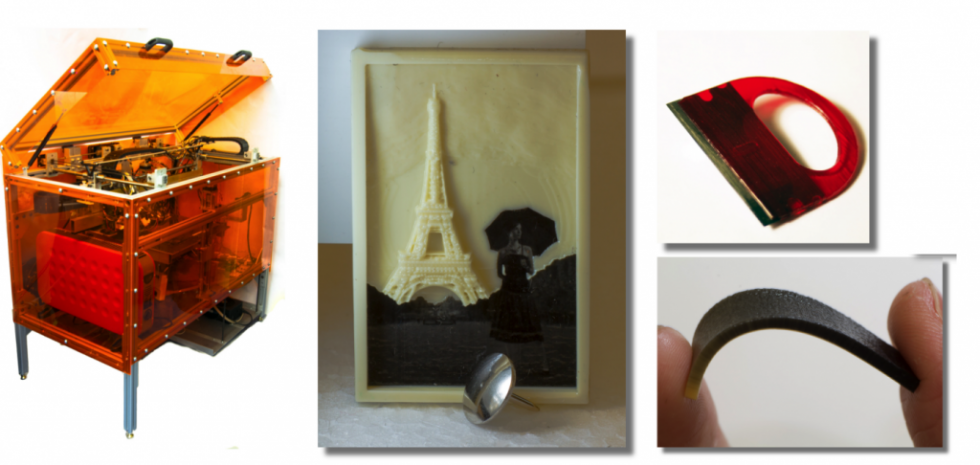3D printer from MIT: up to 10 materials per model

MIT has developed a 3D printer that can print ten materials at a time. The company wants the device to soon be able to print fully functional objects, such as printed circuit boards.
The Mary-Ann Russon article from Ibtimes.co.uk is translated for you by the Top 3D Shop .
Researchers at the Laboratory for Computer Science and Artificial Intelligence MIT (CSAIL) have made a breakthrough in the field of 3D printing by developing a prototype 3D printer that can use up to 10 different materials at the same time on one object.
At the moment, most 3D printers can print only one material during one process, many can already two, and very rare models - three or five. Multimaterial 3D printers existed before - Stratasys launched the world's first full-color 3D printer with several materials in January 2014. He was able to print objects from rubber and plastic, but his problem was an extremely high cost ($ 250,000). Another disadvantage of this solution is that it still required human intervention in the printing process.
')
The new 3D printer from MIT - MultiFab is devoid of these shortcomings. This is an all-in-one system that costs $ 7,000, it can quickly print out multi-component objects from different materials, and no operator intervention is required.
How MultiFab works
During printing, the printer controls the progress of work, for this it uses three-dimensional machine vision.
The data received from optical sensors allows the 3D printer’s computer to self-calibrate the device and correct errors that occur.
During printing, specialized components, such as electronic, can be added to the model. The device will continue printing around these components, incorporating them into the final product.
“We combined two worlds with MultiFab - traditional production and 3D printing. We will be able to make a number of new objects, which until recently it was impossible to create.
Now, 3D printers are mainly used for prototyping, creating molds and other types of blanks, but MultiFab will create complete functional objects, combining several materials with different properties ”,
Said Javier Ramos, a research engineer with CSAIL and co-author of the research.
Modern electronics in the future

LED lenses printed in 3D using MIT MultiFab.
At the moment, CSAIL researchers have already succeeded in printing LED lenses, a plastic metal blade holder, and smartphone cases that are printed right around the gadget. The developers believe that MultiFab will find its application in the production of consumer electronics, medical imaging and telecommunications.
The next step for researchers will be 3D printing of objects with built-in engines and actuators. If finished products can function, this will open up opportunities for 3D printing in the field of advanced electronics, such as the creation of robots.
“Designers and engineers are accustomed to design using only one material. With the advent of such equipment, the design paradigm itself will change. This will require new hardware and software, and we will have to change the way we, engineers and designers, approach the development process.
Imagine someone selling electric wine openers, but he doesn’t have $ 7,000 to buy such a printer — he can come to the copy center with a digital model and print a batch of finished products at a reasonable price. I dream of using my equipment for such purposes, ”
- said Ramos.
Share your opinion in the comments.
Source: https://habr.com/ru/post/455186/
All Articles